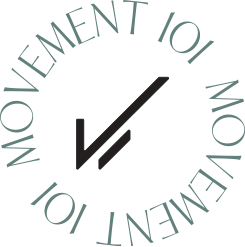|
Osteoporosis is a condition where bones become fragile, thin, and weak, such that even a minor accident or bump can cause a broken bone. About 6.3 million Australians have osteopenia and a further 1.2 million Australians have osteoporosis – this means 34 percent of Australians have low bone density.
If you have osteoporosis or osteopenia, you need a good exercise regime that helps to strengthen and maintain bone health. A specialised Pilates management focuses on bone and muscle strength, helping in the prevention of more bone mass loss and reverse the effects of osteopenia or osteoporosis. Pilates exercises focus on alignment with weight-bearing workouts while instantaneously reinforcing the legs, spine, and core, which are crucial. Is Pilates Good for Osteoporosis? Pilates is suitable for people with osteoporosis since it can provide numerous highly targeted workouts to help people with weak bones strengthen them. Pilates exercise can help reduce the rate at which you fall, improve range of motion and posture, and also help strengthen the muscles that support the bones. However, many common Pilates workouts are not safe for those with osteoporosis. That means it’s crucial to understand the kind of workout that is dangerous and the exercise that are most useful. Generally, those with osteoporosis want to concentrate on building their back, legs, shoulders, and hips. Basically, you want to target the muscles that are liable for supporting the bones. That means Pilates for osteopenia and osteoporosis might include push-ups, chest expansion, leg kicks, side-lying series, and circles. Best Pilates Exercises for People with Osteoporosis Palate exercises that work on the legs, shoulders, hips, and back are the most beneficial for those with osteoporosis. Strengthening your hips should be your primary objective. Reformer Pilates exercises are more suitable for people with osteoporosis since they are weight-bearing, and some include resistance from the exercise band or Pilates ring. The exercise does not include flexion or side bending with rotation. Those with osteoporosis should avoid exercises that involve rolling on their backs or forward, so you should be cautious about performing these types of exercises. Moreover, it is important to do Pilates with an instructor trained in a low-impact workout for osteoporosis. Pilates Classes for Osteoporosis It is important to find Pilate classes that provide exercises for people with osteoporosis. When choosing a class, you need to ask if the Pilate instructor is familiar with the exercise that is safe for people with osteoporosis and if they can help improve balance. The real danger of this disease is that it increases the risk of falling, which may end badly. So, preventing falls can be vital, and Pilate is a form of exercise that can help with that. Working with the right Pilate instructor and following the regimen can do great things for those with osteoporosis. How Can We Help? If you are thinking of starting Pilates classes as part of your osteoporosis or osteopenia management, Movement 101 can help you. Our experienced Pilates instructors can help ensure you get an individualised program. Contact us today to book an appointment. Learn more about how we can help you. Movement 101 Botany, Marrickville, Waterloo & Wolli Creek Comments are closed.
|
AuthorWrite something about yourself. No need to be fancy, just an overview. Archives
April 2024
Categories |
|
|
|


 RSS Feed
RSS Feed









